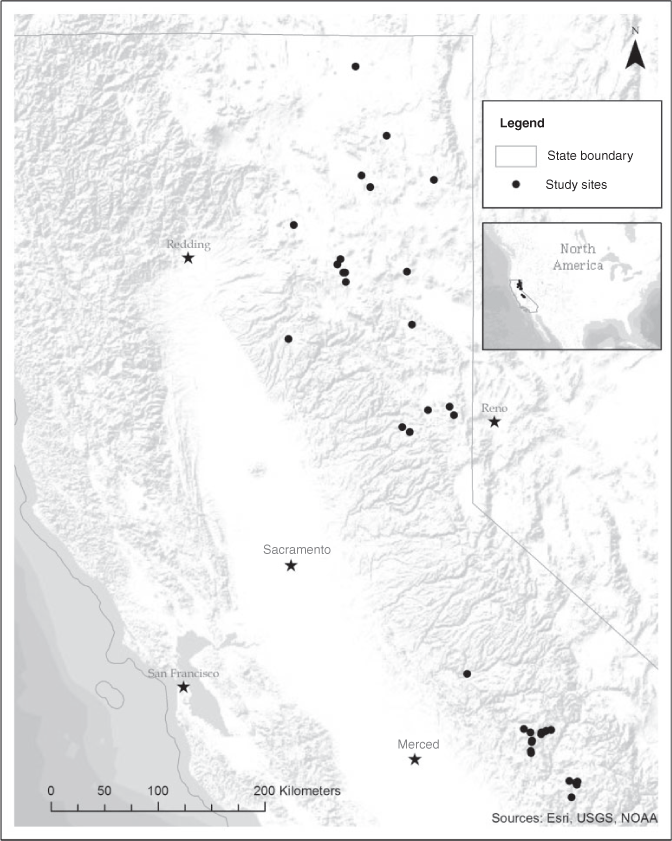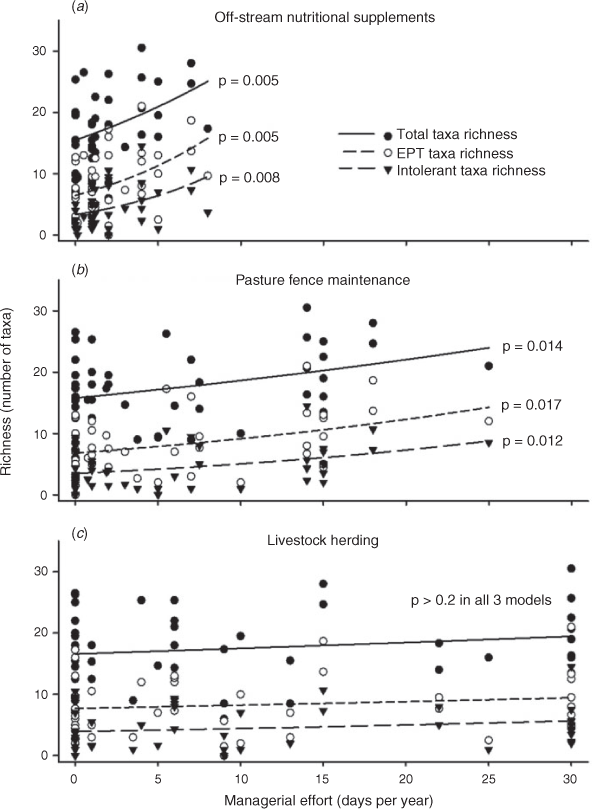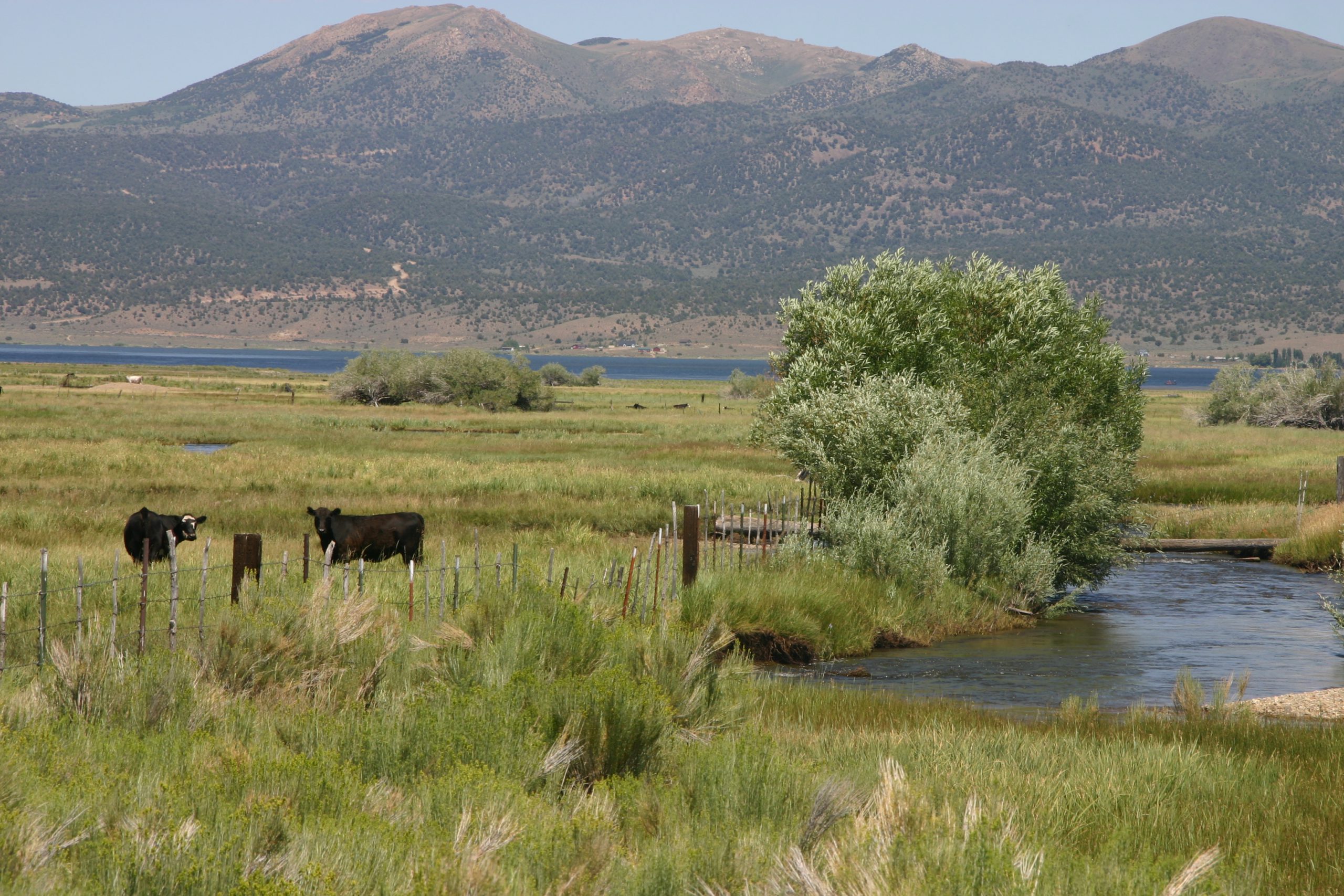In the absence of appropriate management, excessive livestock damage can occur in sensitive habitats such as riparian areas that provide drinking water, forage, and microclimates sought by free-ranging livestock. This is particularly true in complex, rugged, arid range landscapes. Fortunately, conservation-grazing management strategies can reduce the likelihood of livestock damage to riparian areas. Grazing management practices such as herding, strategic placement of livestock nutritional supplements and drinking water stations, and strategic fencing have the potential to reduce negative impacts of livestock to riparian areas. Recent reviews have found that these practices are generally effective across a diversity of grazing lands, that there is substantial site to site variability likely due in large part to variable site-specific factors such as size of management unit, livestock type, season of use, vegetation patterns, and topography (Malan et al. 2018; George et al. 2011).
Managerial effort invested in implementation (i.e. person-days per year spent on implementation) can also influence variability in effectiveness of grazing distribution practices. For example, a manager may ‘implement’ an off-stream station with nutritional supplements to entice livestock away from a riparian area. However, during initial implementation, the manager may not invest enough in site-specific assessments of livestock utilization patterns to allow sufficiently informed decisions on locating the station with the best chance of improving distribution. Subsequently, the manager may then inadequately invest effort (time) in monitoring the station (e.g. ensuring that livestock locate and utilize the nutritional supplements) and maintaining it (e.g. replacing supplements as consumed, moving station to a new area as associated forage is depleted) to achieve desired reductions in livestock damage to the riparian area of concern.
We (Derose et al. 2020) conducted a study of 46 grazed riparian areas (Figure 1), to evaluate relationships of stocking rate and managerial effort to implement livestock distributional practices with riparian health. We found no significant relationship of riparian health (i.e. in-stream invertebrate richness) with stocking rate, nor with the simple implementation (yes/no) of off-stream nutritional supplements, fence maintenance, and livestock herding (P ≥ 0.22 in all cases). However, we did find significant positive relationships between riparian health and managerial effort (person-days spent per year for each individual practice) to implement off-stream nutritional supplements and fence maintenance (Figure 2). Livestock herding effort had an apparent positive association with riparian health. Results highlight that site-specific variation in managerial effort accounts for some of the observed variation in practice effectiveness, and that appropriate managerial investments in grazing distributional practices can improve riparian conditions.


See just published full results in the Rangelands Journal here: https://doi.org/10.1071/RJ20024
Literature Cited
Derose, K.L., C.F. Battaglia, D.J. Eastburn, L.M. Roche, T.A. Becchetti, H.A. George, D.F. Lile, D.L. Lancaster, N.K. McDougald, and K.W. Tate. (2020). Riparian health improves with managerial effort to implement livestock distribution practices. The Rangeland Journal. https://doi.org/10.1071/RJ20024
George, M. R., Jackson, R. D., Boyd, C. S., and Tate, K. W. (2011). A scientific assessment of the effectiveness of riparian management practices. In: ‘Conservation Benefits of Rangeland Practices: Assessment, Recommendations, and Knowledge Gaps.’ Ch. 5. (Ed. D. D. Briske.) (Allen Press: Lawrence, KS, USA.).
Malan, J. C., Flint, N., Jackson, E. L., Irving, A. D., and Swain, D. L. (2018). Offstream watering points for cattle: protecting riparian ecosystems and improving water quality? Agriculture, Ecosystems & Environment 256, 144–152.

